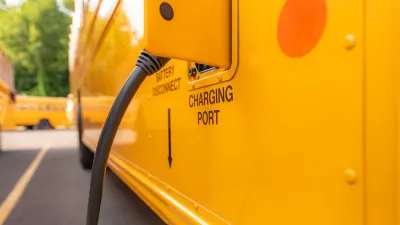During the first week of Oct, gas prices were falling through much of the country while spiking an unprecedented 50 cents in CA due to some unique circumstances - bad air requiring a unique fuel blend and a 'perfect storm' of refinery mishaps.
Journalist Paul Rogers, who covers environmental and science news for the San Jose Mercury News and KQED in San Francisco, explains that there isn't much California can do to prevent gasoline price spikes like the unprecedented 50-cents it experienced the first week of October.
"Skyrocketing gas prices over the past week have been blamed on two key issues: outages at California refineries and the fact that the state requires a unique type of clean-burning summer gasoline that can't be easily replaced or imported from other places during shortages." In addition, "a Chevron pipeline in the Central Valley shut because of high levels of organic chloride found in the gas", the Mercury News reported on Oct. 07. In short, it was the 'perfect storm' that hit the California gasoline production and distribution network.
In fact, California's 14 refineries have produced surplus gasoline due to decreased demand since consumption peaked in 2006 due to decreased driving and more efficient vehicles. Don't expect more refineries to be built.
Rogers explains how California became a 'fuel island' and why it's unlikely to change. Start with the country's dirtiest air, most people, and most vehicles.
"The state's special blend of gasoline dates back to 1971, when Gov. Ronald Reagan's administration required that fuel sold during the summer be refined in a way that causes less evaporation." It was made even cleaner in 1996 by former Republican Gov. Pete Wilson. Consequently, air is dramatically cleaner today.
Should California alter the fuel blend to conform to other states' fuels, health problems would rise, including "increased emphysema, asthma and even deaths."
With the state's bad air and concern for public health, one oilman had this to say about preventing these types of price spikes.
"I don't know that there is a solution to this," said Jay McKeeman, vice president of the California Independent Oil Marketers Association. "It's the price we pay for living in California."
Along with the surge in prices has been a surge in transit ridership, at lease in southern California, reports KABC-TV/Los Angeles. On Oct. 9, the average price for a gallon of regular unleaded was $4.71 in LA and Long Beach, 51 cents more than last week.
"The increasing cost of gas has forced many to take a bus or train. Metrolink says Southern Californians are packing mass transit lines. They have reported a definite increase in ridership, even posting a record of nearly 23,000 riders this weekend."
FULL STORY: No easy answer to fixing California's record gas prices

Study: Maui’s Plan to Convert Vacation Rentals to Long-Term Housing Could Cause Nearly $1 Billion Economic Loss
The plan would reduce visitor accommodation by 25,% resulting in 1,900 jobs lost.

North Texas Transit Leaders Tout Benefits of TOD for Growing Region
At a summit focused on transit-oriented development, policymakers discussed how North Texas’ expanded light rail system can serve as a tool for economic growth.

Why Should We Subsidize Public Transportation?
Many public transit agencies face financial stress due to rising costs, declining fare revenue, and declining subsidies. Transit advocates must provide a strong business case for increasing public transit funding.

A Visual Celebration of Manhattan’s Chinatown Elder Community, Through Food
Lanterns, cafeteria trays, and community connection take center stage in this stunning photo essay.

How to Make US Trains Faster
Changes to boarding platforms and a switch to electric trains could improve U.S. passenger rail service without the added cost of high-speed rail.

Columbia’s Revitalized ‘Loop’ Is a Hub for Local Entrepreneurs
A focus on small businesses is helping a commercial corridor in Columbia, Missouri thrive.
Urban Design for Planners 1: Software Tools
This six-course series explores essential urban design concepts using open source software and equips planners with the tools they need to participate fully in the urban design process.
Planning for Universal Design
Learn the tools for implementing Universal Design in planning regulations.
City of Santa Clarita
Ascent Environmental
Institute for Housing and Urban Development Studies (IHS)
City of Grandview
Harvard GSD Executive Education
Toledo-Lucas County Plan Commissions
Salt Lake City
NYU Wagner Graduate School of Public Service




























